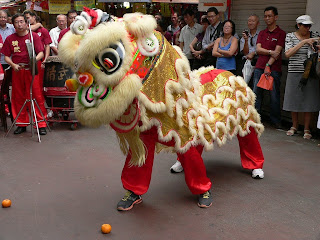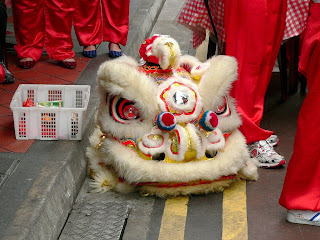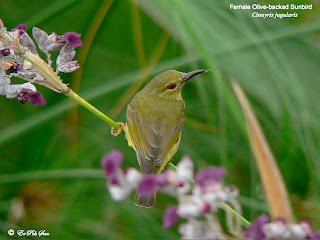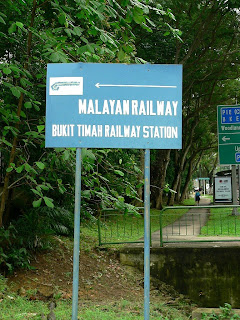Wednesday, May 29, 2013
Friday, May 24, 2013
Saturday, May 21, 2011
My new iMac has arrived.

Just wanted to give a shoutout that last Wednesday (18 May) I got my new Imac 27". It comes with an Intel Core i5, 2.7 GHz quad-core, 8 GB of RAM and hard drive capacity 1 TB.
I've copied everything over now and everything is going smoothly.

Monday, April 04, 2011
Little Heron displays Fishing Tactics
I spotted this Little Heron (Butorides striatus) in the shallows of a lake in Japanese Garden, Singapore, and watched it stealthily, stalk around on the hunt for small fishes. This bird thinks critically just like a human to catch fish. It uses a piece of bread as bait to lure the fish within range for it to prey on.

Click on the above photo for high-res image Crouching motionless, it waits to ambush its prey.

Click on the above photo for high-res image Uses a piece of bread as bait to capture fish.

Click on the above photo for high-res image The neck extended to make a swift strike at the fish.

Click on the above photo for high-res image Resumes crouching position and wait for the next fish victim.

Tuesday, March 01, 2011
The Pelican Flower
Aristolochia grandiflora - or Pelican Flower - is a herbaceous vine with heart-shaped leaves that is native to the Caribbean. It is commonly known as the Pelican Flower because its unopened bud resembles a sleeping pelican.
The flower buds open early in the morning and the flowers only last for roughly 12 hours. They emit a foul smell and attract flies which are their natural pollinators. The opened flower has a brownish-purple background that is covered with a complicated network of white veins which radiate outwards from the central, intensely dark purple throat towards the edge of the lobe.

Click on the above photo for high-res image Frontal view of the spectacular, foul smelling flower. Heart-shaped, about a foot long and 8 inches wide. As added adornment, a foot-long, slender tail hangs from the flower.

Click on the above photo for high-res image The name "Pelican flower" was given to Aristolochia grandiflora because its unopened bud resembles a sleeping pelican.

Click on the above photo for high-res image When the flower opens it emits a somewhat foul odor. The flies, attracted to the smell of the open bloom, alight on the inner walls of the flower, which then closes, trapping the flies inside until the male flower has matured.

Click on the above photo for high-res image A close-up view of the bloom showing a pollinating fly inside the open flower.

Click on the above photo for high-res image The high climbing plant with heart-shaped leaves up to 10 in. (25.4 cm) long.
The flower buds open early in the morning and the flowers only last for roughly 12 hours. They emit a foul smell and attract flies which are their natural pollinators. The opened flower has a brownish-purple background that is covered with a complicated network of white veins which radiate outwards from the central, intensely dark purple throat towards the edge of the lobe.





Monday, February 07, 2011
Plucking the Greens 采青, Chinatown 2011
From Wikipedia: During Chinese New Year, lion dance troupes will visit homes or businesses to perform what is called “plucking the greens” (採青 – cǎi qīng), a quest by the 'lion' to pluck the auspicious greens normally 'vegetables' like lettuce which in Chinese is called 'cái' (菜) that sounds like 'cái' (财) (fortune) and auspicious fruits like oranges tied to a "Red Envelope" (known as Hóng Bāo in Mandarin, Ang Pao in Min Nan, Lai See in Cantonese) containing money either hung high up or just placed on a table in front of the premises. The lion will dance and approach the "green" and "Red Envelope" like a curious cat, to "eat the green" and "spits" it out leaving the peeled oranges in a nice arrangement like some auspicious Chinese characters but keeps the "Red Envelope". The lion dance is believed to bring good luck and fortune to the business and the troupe is rewarded with the "Hóng Bāo".

Click on the above photo for high-res image These musicians are members of the Singapore Chin Woo Athletic Association (新加坡精武體育會), one of the oldest troupes in Singapore. They accompany the lion dancers, playing gongs, cymbals and drums. Every gesture made by the lion dancer is choreographed to a particular beat in the music.

Click on the above photo for high-res image Lion dancers getting ready to perform the Cai Ching ritual of plucking the greens at a storefront in Trengganu Street, Chinatown.

Click on the above photo for high-res image Some dramatic head thrusts to the sound of drums and gongs.
Shake it to the left, shake it to the right . . .

Click on the above photo for high-res image The Lion made great use of its prancing legs in its dance.

Click on the above photo for high-res image Before approaching the Greens, the Lion has to move about cautiously to ensure a safe path to the lucky green.

Click on the above photo for high-res image The ‘Greens’ (or the “food” for the lion) is usually presented to the Lions together with a "Red Packet" ( Ang Pow) and some oranges.

Click on the above photo for high-res image Peeled oranges spat out by the Lion were arranged into auspicious Chinese characters -吉祥如意 ( ji xiang ru yi ) which literally means "Good fortune as one wishes; good luck and happiness to you". Thanks to かつ なが for the translation.

Click on the above photo for high-res image A close-up view of the Southern Lion's head.



Shake it to the left, shake it to the right . . .





Monday, December 20, 2010
Olive-backed Sunbird
Three sunbird species are said to be common here. They are the Olive-backed (which is the commonest species of sunbird in Singapore), the Crimson (the island’s national bird), and the Brown-throated (the largest of the three and also known as Plain-throated).
The sunbirds are a group of very small birds which feed largely on nectar, although they will also take insects, especially when feeding their young. Their flight is fast and direct on their short wings.

Click on the above photo for high-res image This is a female Olive-backed Sunbird. I was lucky that she perched there long enough for me to get a close-up shot. And she's got some nectar at the tip of her beak.
This bird is also known as Yellow-bellied Sunbird, and its scientific name is Cinnyris jugularis (formerly Nectarinia jugularis). The Olive-backed Sunbirds in this blog were spotted at Sengkang Riverside.

Click on the above photo for high-res image It is really interesting to watch these little sunbirds visiting flowering plants to drink the nectar and forage for insects - they are a real jewel in a concrete jungle.

Click on the above photo for high-res image A female Olive-backed seen sipping nectar from the flowers of the Water Canna plant (Thalia geniculata).

Click on the above photo for high-res image Most species can take nectar by hovering, but usually perch to feed most of the time.

Click on the above photo for high-res image Olive-backed Sunbirds are fun to watch whilst feeding.

Click on the above photo for high-res image The non-native Water Canna is a favourite of the Sunbirds at Sengkang Riverside.
The sunbirds are a group of very small birds which feed largely on nectar, although they will also take insects, especially when feeding their young. Their flight is fast and direct on their short wings.

This bird is also known as Yellow-bellied Sunbird, and its scientific name is Cinnyris jugularis (formerly Nectarinia jugularis). The Olive-backed Sunbirds in this blog were spotted at Sengkang Riverside.





Monday, August 02, 2010
The forgotten Railway Line.
How many of you do remember the old Jurong railway line? This line was actually part of what was called the Bukit Timah Siding. It was on 11 November 1965, when a six mile-long extension line was added to the Singapore main line branching out from the Bukit Timah railway station to Jurong Port via Clementi, Ulu Pandan and Teban Gardens. This railway extension was intended for goods transportation as Jurong lacked good roads during that time. Unfortunately, it failed to generate satisfactory traffic and was consequently closed in the early 1990s. Parts of the railway had since been partially dismantled.
It has been roughly 20 years since the line's closure but most of it are still around. Old rail bridges, tunnels, crossing arms, tracks, and even railway signs are still out there albeit some are becoming obscured due to overgrown thick vegetation. I have managed to take some pictures of them for posterity.

A bird's eye view of the railway bridge over Sungei Ulu Pandan. Click on the above photo for high-res image

Click on the above photo for high-res image At a quick glance, the railway crossing that spans Sungei Ulu Pandan has an uncanny resemblance to the bridge in the 1957 movie, “Bridge On The River Kwai”. Close your eyes, and maybe you can hear the sound of POWs marching and whistling to the “Colonel Bogey” tune.

Click on the above photo for high-res image The view of the railway track just before crossing the bridge. Below it flows the Sungei Ulu Pandan.

Click on the above photo for high-res image This photo shows the remnants of the railway track that runs over the now disused bridge.

Click on the above photo for high-res image The railway crossing over Sunset Way.

Click on the above photo for high-res image Remnants of the railway track at Sunset Way now covered with thick vegetation.

Click on the above photo for high-res image I have no idea what this is. Found it on one of the concrete piers supporting the railway bridge spanning the Sungei Ulu Pandan. Does anyone have any clue?
It has been roughly 20 years since the line's closure but most of it are still around. Old rail bridges, tunnels, crossing arms, tracks, and even railway signs are still out there albeit some are becoming obscured due to overgrown thick vegetation. I have managed to take some pictures of them for posterity.







Friday, July 23, 2010
Bukit Timah Railway Station
History has forgotten about Bukit Timah railway station. Constructed between 1900 and 1902, it was opened in 1915 as part of the Singapore-Kranji Railway.
Today, Bukit Timah Railway Station is just a passing loop railway station used for train crossings and there are no longer boarding/alighting of passengers or collection of cargo.

Click on the above photo for high-res image Directional sign pointing the way to the Railway Station, in case you forgot to bring along your GPS.

Click on the above photo for high-res image Just to remind you that you are standing on KTMB property.

Click on the above photo for high-res image The signbnoard tells passengers that they have reached Bukit Timah. For south bound trains, the next station is "Singapura" (Tanjong Pagar). North bound would be Woodlands.

Click on the above photo for high-res image The Bukit Timah Railway Station was once a place where trains used to stop for passengers to board or alight. After the Malaysian Immigration decided to move to Tanjong Pagar station, the Bukit Timah station now serves as an interchange for trains that are meant to cross with each other. Besides this function, it also carries out an interesting daily routine which is the exchange of "key tokens", a traffic management system to prevent collisions on single-track lines.
There are three lines at the station. The first, nearest to the station platform is the mainline. The middle line is called the loop line and is used to keep a train waiting for a crossing. Crossing means two trains crosses with each other at the station. One of the trains will proceed into the loop line and wait till the train occupying the main line is cleared. The last line is for emergency purposes such as to keep defective wagons or to unload cargo.

Click on the above photo for high-res image (KTMB) Trolley P0206 passing by Bukit Timah Railway Station

Click on the above photo for high-res image A south bound train slows down for the "key token" passing ritual as it approaches Bukit Timah Station. The engine driver would place the "key token" on to a pole for the Station Master to pick it up. In return, he will be given a new "key token" before proceeding to the next station.
Gaining the "key token" signifies permission to proceed, based on security and traffic conditions.

Click on the above photo for high-res image Having collected the "key token", the Station Master returns to his office.

Click on the above photo for high-res image A railroad switch.

Click on the above photo for high-res image The truss bridge across Bukit Timah Road

Click on the above photo for high-res image

Click on the above photo for high-res image

Click on the above photo for high-res image

Click on the above photo for high-res image In Singapore, Keretapi Tanah Melayu Berhad (KTMB) operates the narrow "metre gauge" tracks (1000mm).
Today, Bukit Timah Railway Station is just a passing loop railway station used for train crossings and there are no longer boarding/alighting of passengers or collection of cargo.




There are three lines at the station. The first, nearest to the station platform is the mainline. The middle line is called the loop line and is used to keep a train waiting for a crossing. Crossing means two trains crosses with each other at the station. One of the trains will proceed into the loop line and wait till the train occupying the main line is cleared. The last line is for emergency purposes such as to keep defective wagons or to unload cargo.


Gaining the "key token" signifies permission to proceed, based on security and traffic conditions.







Saturday, June 19, 2010
Keretapi Tanah Melayu (KTM) Tanjong Pagar Railway Station to close by July 2011.

We have only a few months left to take photos of the KTM Stesen area before having to bid farewell to another old friend.










Subscribe to:
Posts (Atom)




